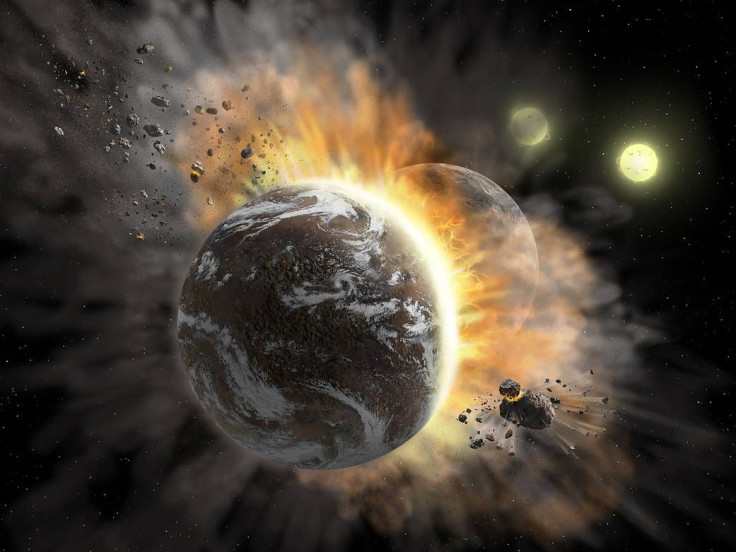NASA Finds More Evidence Of Violent Collision Between Two Exoplanets

KEY POINTS
- NASA discovered more traces of a planetary collision in a distant star system
- New evidence of the collision was spotted by the SOFIA airborne observatory
- Scientists believe a similar collision involving Earth formed the Moon
NASA’s airborne observatory has discovered more evidence of a violent collision of exoplanets in a distant star system. Many scientists believe that a similar collision occurred in the Solar System, which led to the formation of the Moon.
BD +20 307 is a binary star system that’s located about 300 light-years from Earth. Even though the stars within this system are over a billion years old, the dust debris swirling around them are not cold, which contradicts common observations regarding very mature star systems.
Recently, while looking into BD +20 307, NASA’s Stratospheric Observatory for Infrared Astronomy (SOFIA) came across traces of even more warm dust, supporting the idea that two exoplanets collided in this region.
This isn’t the first time that SOFIA discovered evidence of a planetary collision in BD +20 307. In October last year, the observatory’s infrared imaging capabilities revealed that the brightness of the debris floating within the star system has increased by 10 percent since 2010 when it was observed by the Spitzer Space Telescope.
For scientists studying BD +20 307, finding traces of a collision provides clues as to what happens when two massive cosmic bodies hit one another.
“The warm dust around BD +20 307 gives us a glimpse into what catastrophic impacts between rocky exoplanets might be like,” Maggie Thompson, a graduate student at the University of California, said in a statement. “We want to know how this system subsequently evolves after the extreme impact
“The SOFIA observations show changes in the dusty disk on a timescale of only a few years,” Alycia Weinberger of the Carnegie Institution for Science’s Department of Terrestrial Magnetism added.
For NASA and the scientists, studying planetary collisions can provide valuable information regarding the formation of cosmic objects in Earth’s neighborhood. They believe that a similar event led to the formation of the Moon.
It is widely believed that billions of years ago, a massive object as big as Mars collided Earth. The violent impact sent chunks of debris into space, which then coalesced into another cosmic object that became Earth’s Moon.
© Copyright IBTimes 2024. All rights reserved.





















